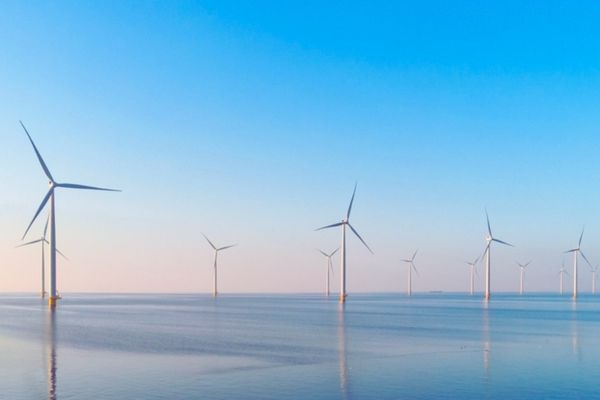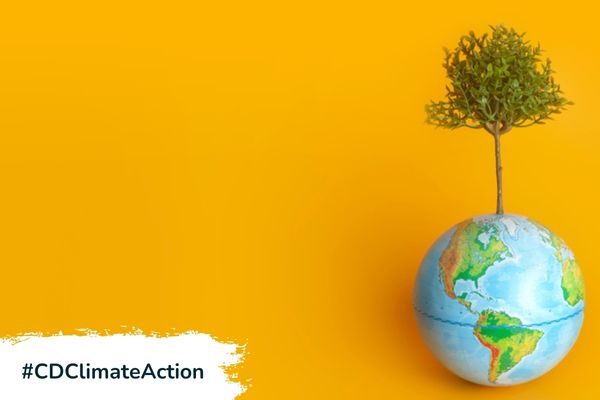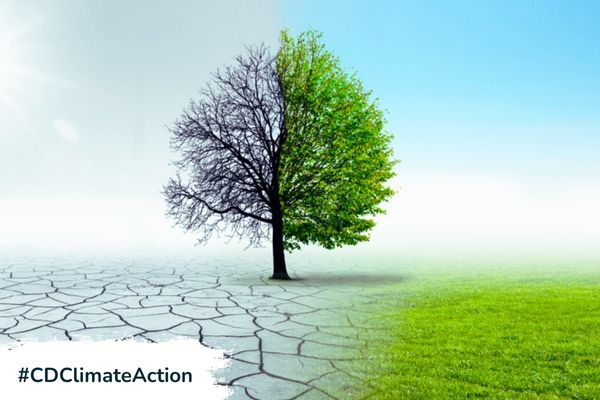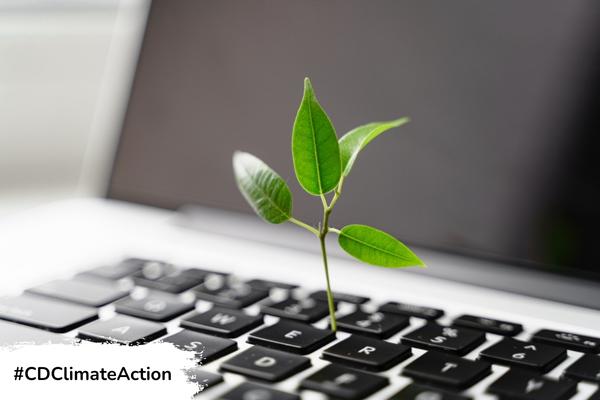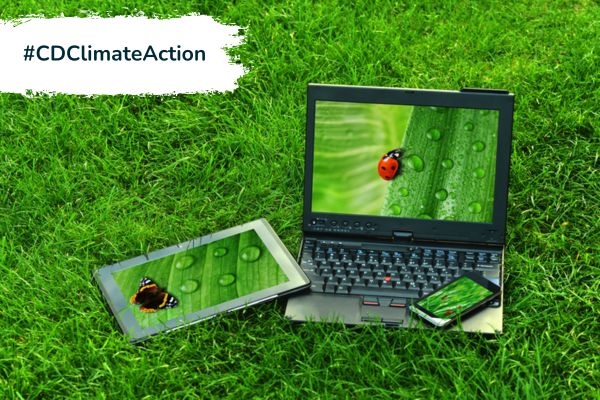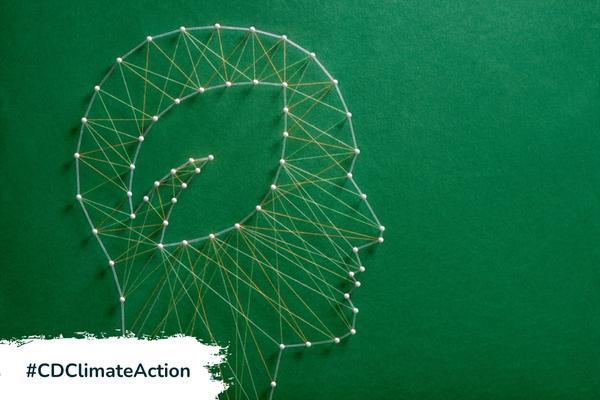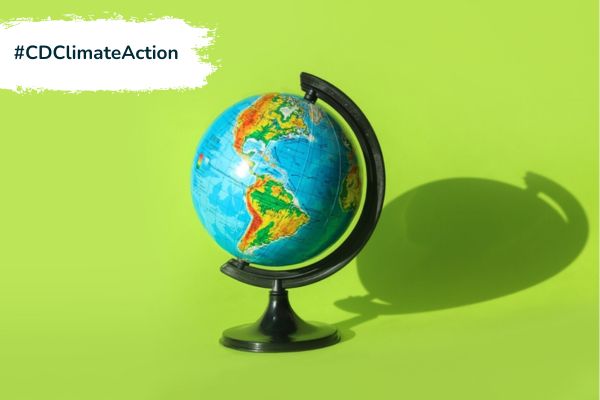Insights
INSIGHTS
All Topics
My Account
Climate change: the science, causes, and consequences
13 Apr 2023by Laura Stanley
We explore the history of climate change research and the science behind the climate crisis, with statistics and evidence from leading scientists
CHECK OUT THE ’CLIMATE ACTION’ HUB!
Climate change is by no means a new concept. Almost two hundred years ago, in 1824, a French mathematician called Joseph Fournier calculated that the Earth should be much colder, suggesting that there must be an element acting like insulation making it warmer.
American scientist Eunice Foote discovered that it was carbon dioxide and water vapor keeping in the heat in 1856, and 40 years later, a paper by Swedish scientist Svante Arrhenius posited that a change in carbon dioxide (CO2) levels could alter the temperature of the Earth’s surface.
Today, 97% of climate scientists agree that climate change is human-made. Arrhenius’ theory has been proven true and the pace of global warming has been accelerated by our reliance on fossil-fuels for energy and transport and cutting down trees and habitats to provide food.
Scientific consensus leaves no room for politics or opinion. The science around climate change is clear. The past eight years were the warmest on record and research from the European Union’s Copernicus Climate Change Service described 2022 as “a climate of extremes”, with flooding, heatwaves, and wildfires taking place all over the world.
As the BBC said in 2018, when discussing how to report climate change, “the referee has spoken”. It is a matter of fact. In this article, we explore more around the science of climate change, how it has changed over time, and what, exactly, the scientists are saying now.
What the climate scientists said before about climate change
How we understand climate change has altered over time as science has become more advanced. While Fournier and Foote first noticed the world was warming, they did not recognise that it was necessarily human-made. Some global warming is natural – the Earth has historically gone through many periods of warming and cooling – but the rate we’re seeing in the 21st century cannot be explained without human intervention.
Fortunately, with better ways to measure CO2 emerging in the 20th century, along with satellites and improved data analysis, scientists have been able to improve our understanding of climate change and, importantly, what happens next. With each piece of research, the findings have become increasingly conclusive.
In 1938, 42 years after Arrhenius’ initial hypothesis, engineer Guy Callandar linked global warming to carbon dioxide increases in the Earth’s atmosphere. Like Arrhenius, Callandar thought that this warming would actually be beneficial to the planet, preventing the “return of the deadly glaciers”.
But as Duncan Clark, visiting researcher at the UCL Energy Research, notes, this is “partly because [Arrhenius] had no way to predict the meteoric rise in global fossil fuel consumption over the following hundred years".
Callandar’s research – mostly correct as it has since proven to be – did little to convince others that climate change might be a bad thing either, though it did influence more research into the theory to determine its accuracy.
One of the people leading this wave of research was physicist Gilbert Plass, who became one of the first scientists to make the link between rapid industrialisation and global heating. In 1953, Plass told TIME Magazine: "At its present rate of increase, the CO2 in the atmosphere will raise the earth’s average temperature 1.5° Fahrenheit every 100 years.…for centuries to come, if man’s industrial growth continues, the earth’s climate will continue to grow warmer.”
American scientist Charles Keeling confirmed human-made (or anthropogenic) climate change by taking continuous measurements of CO2 in the atmosphere from a base in Hawaii. This led to a graph called “The Keeling Curve” which demonstrates the sharp upward trajectory in the amount of CO2 in the atmosphere since 1958, when measurement began.
As The Rough Guide to Climate Change by Robert Henson, summarises: “The first computer models of global climate in the 1960s, and more complex ones thereafter, supported the idea floated by mavericks decades before: that the addition of greenhouse gases would indeed warm the climate.
“Finally, global temperature itself began to rise sharply in the 1980s, which helped raise the issue’s profile among the media and the public as well as scientists.”
Indeed, in 1988, scientists recorded the hottest year ever until that point, causing the idea of global warming as we know it to go mainstream.
What the climate scientists are saying now about climate change
We know now, unequivocally, that climate change is human-made. In 1995, an international group of scientists known as the Intergovernmental Panel on Climate Change (IPCC) issued its first public statement, noting the “discernable human influence” on climate change, examining evidence from ice cores, ocean beds, tree rings, pollen remains, and much more.
Drilling ice from Antarctica and Greenland has shown differences in the atmosphere from as far back as 800,000 years ago, while, more recently, satellite monitoring of the sun beginning in 1978 has made clear that its radiation has not increased, despite rising temperatures on Earth.
Gavin Schmidt, Director of NASA’s Goddard Institute for Space Studies, told Columbia Climate School that, while there are numerous factors scientists look at to see the Earth is heating, each cause has its own fingerprint to identify it.
“If the sun were brighter, we would see warming all the way up through the atmosphere from the surface to the stratosphere to the mesosphere. We don’t see this. We see instead warming at the surface, cooling in the stratosphere, cooling in the mesosphere. And that’s a signature of greenhouse gas forcing, it’s not a signature of solar forcing. So we know it’s not solar.”
Scientists can also distinguish between carbon dioxide molecules emitted naturally and those from fossil fuels. Molecules of CO2 from fossil fuels are lighter so more of these molecules in the atmosphere corresponds to the rise in fossil fuel emissions.
Columbia Climate School points out that CO2 levels are 40% higher than they were before the Industrial Revolution began, while there is two and a half times as much methane in the atmosphere as before the 18th century. While some methane is natural (from wetlands, volcanoes, and sediments, for example), the majority of emissions now arise from oil and gas production, livestock farming, and landfills.
What the science says about the climate crisis
As our understanding of climate change has deepened, the language we use to describe it has changed too. What we generally refer to now when we say climate change or global warming is generally the man-made effects, but there has been debate over whether climate change is urgent enough as a description of its impacts, hence the term “climate crisis”.
We know now that climate change poses an existential threat. If the Earth continues to heat at the same speed, due to fossil fuel emissions and anthropogenic changes to our environment, it will become unhabitable.
The 21st Century has already come to bear many of the warnings issued in 1995 by scientists concerned about the human impact on the climate, including rising oceans, droughts, storms, and heatwaves. Our ecosystems have suffered, with extinction occurring at 1,000 times the natural rate, and the heat has continued to increase; the 15 hottest years in history have all occurred since 1998.
Each degree of increased heat has its impact. Scientists and government members told from the IPCC told the UN in a series of reports that “limiting global temperature rise to no more than 1.5°C would help us avoid the worst climate impacts and maintain a livable climate”. In 2022, the IPCC added: “Without immediate and deep emissions reductions across all sectors, limiting global warming to 1.5°C is beyond reach”.
The science shows empirically that the window for changing the trajectory of global warming is small. The IPCC’s latest projections warn that the world is getting “measurably closer” to the 1.5°C threshold, warning that, as long as countries continue to emit greenhouse gases, temperatures will rise.
The urgency of the climate emergency means that it will take both individual and collective action to address. Changes in the way we live and work, such as transportation, diet, and travel, will contribute to the protection of the planet, as will government action on the environment, energy infrastructure, air quality, and much more.
In order to make these changes – which science tells us will make all the difference – we need to keep environmental sustainability at the heart of our decision-making. The charity sector is used to making its voice heard in the name of a good cause and it is essential that charities use that voice to push forward the conversation around climate change. It is not a partial issue; it is reality. The science proves it.
Sign up for our newsletter
Click above to receive the latest sustainability content straight to your inbox
More on this topic
Related Content
Related Videos
Our Events
Charity Digital Academy
Our courses aim, in just three hours, to enhance soft skills and hard skills, boost your knowledge of finance and artificial intelligence, and supercharge your digital capabilities. Check out some of the incredible options by clicking here.





